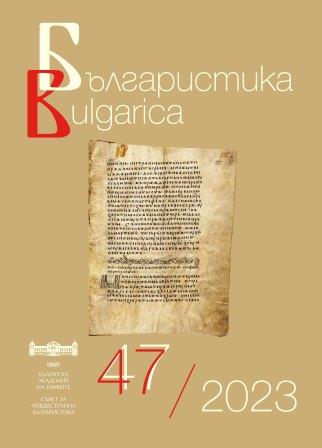
Научна периодика 2023
Content of the main Bulgarian scientific journals for the current year in linguistics, literature, history, folklore, ethnography, archaeology and art studies.
More...We kindly inform you that, as long as the subject affiliation of our 300.000+ articles is in progress, you might get unsufficient or no results on your third level or second level search. In this case, please broaden your search criteria.

Content of the main Bulgarian scientific journals for the current year in linguistics, literature, history, folklore, ethnography, archaeology and art studies.
More...
Data about scientific events in the field of the humanities in Bulgaria in the second half of 2023.
More...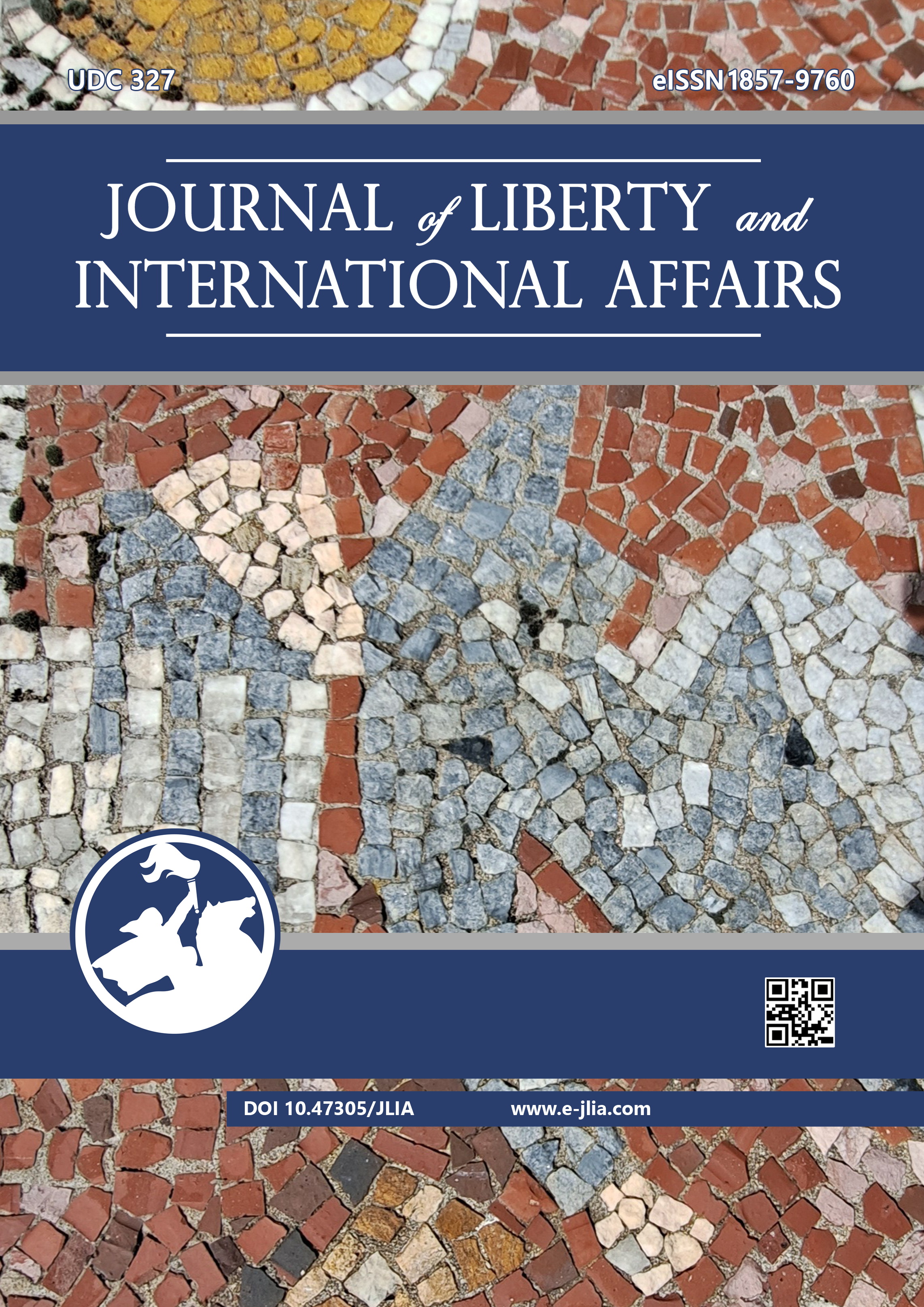
The article analyzes the process of normalizing relations between Belgrade and Pristina after adopting the Agreement on the Path to Normalization. The analytical framework of neorealism was used to explain that the normalization process was accelerated due to the war crisis in Eastern Europe. The international legal aspects of the agreement were scrutinized, based on the method of content analysis and comparative studies, to argue that the agreement is a legally binding treaty between two sides that respect each other’s international legal personality. The authors concluded that the European Union and the United States attempted to create new momentum in the decade-long and rather unsuccessful process by adopting the Agreement and the Annex on implementation. Thus, these documents were put in the context of relations between Belgrade and Pristina and broader European and regional levels of complex relations. In addition, the analysis concluded that the documents serve as new impulses in normalization as a continuous legal formalization of relations between the two sides based on international legal rules.
More...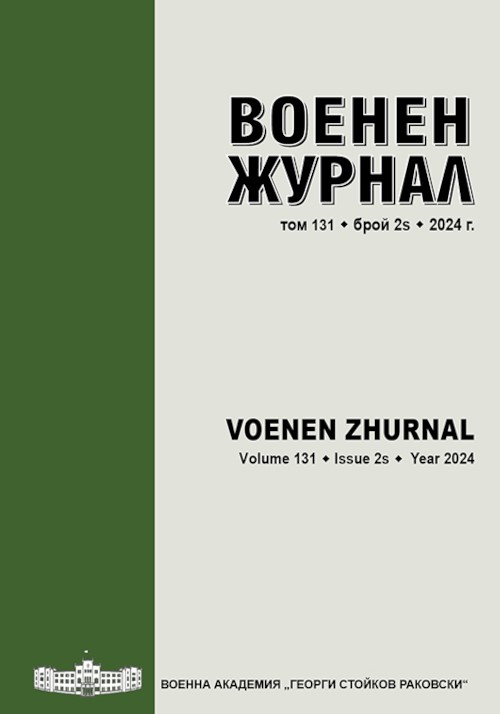
The Black Sea is such a geographical region which due to its strategic location is a source of many military imbalances. The collapse of the Soviet Union and the subsequent confrontation between the Russian Federation and Ukraine which on February 2022 turned into a full-scale war that led to the creation of new military imbalances in the region. After two years of hostilities Russia’s Black Sea Fleet faces multiple challenges that are a mix of geographic, political and military factors which could lead to major changes in the military balance in the region. Turkey is one of the countries that can have a leading role in the new military and political situation in the Black Sea as it has a powerful navy, as well as the fact Ankara is pursuing specific interests of its own, despite its ties to military alliances or other countries. The US Navy does not have direct access to the Black Sea but the US alongside NATO countries can help rearming its allies in the region. Romania is one of those countries and Bucharest has ambitions to become a kind of NATO hub in the Black Sea. It remains to be seen how all of these factors will affect Bulgaria.
More...
The main goal of the present study is to show for the first time the nuances of the political-diplomatic relations between Bulgaria and NATO in the context of the difficult first years of the democratic changes in the country. The text is based on a large amount of newly released archives from the Ministry of Foreign Affairs and the Central State Archive, thus claiming a high degree of objectivity.
More...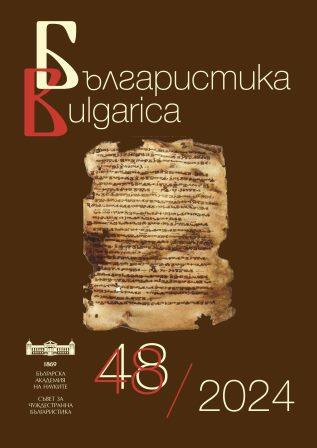
Selected bibliography in the field of Bulgarian Studies published in the current year.
More...

Book review: Балканските култури: диалог, трансфер, метаморфози. Под ред. Орлин Събев, Лора Тасева, Антоанета Балчева. София, ИБЦТ – БАН, 2023, 234 с., ISBN 978-619-7179-38-5 [The Balkan Cultures: Dialogue, Transfer, Metamorphoses. Ed. Orlin Sabev, Lora Taseva, Antoaneta Belcheva. Sofia, IBSCT – BAS, 2023].
More...


In the present article we examine mythological legends on imps, belonging to a specific genre of Georgian folk prose. They are new and have occupied their autonomous place in Georgian folklore since the 80s of the XIX century. During investigation we used the methods of secondary analysis and comparison. We used the texts of oral histories comparing them with published texts and with those kept in the Folklore Archive of Shota Rustaveli Institute of Georgian Literature. Oral histories are also recorded during our field-work in 2009 and kept as video materials in the mentioned archive. Unpublished archival materials contain the beliefs of the “low mythology” that have universal character. Mythological narratives on imps are based on real stories that are later transformed into unknowable events by folk imagination. In order to gain an understanding of this folk character, it is necessary to consider a number of key questions. These include: where do they try to meet people, how do they look – in terms of their appearance – when they are activated, how do they relocate, what is their function, what kind of relations do they have with human beings, and how can people get rid of them. In addition, it is important to consider the modern people’s attitude towards this character. Their habitation is proximate to that of humans, in narrow gorges, dark, abandoned and jinxed locales. They meet people in uninhabited places, attempting to intimidate them, but as the area becomes settled, they leave. In popular imagination, the imp is a diminutive malevolent spirit, resembling a man’s offspring. It may also take the form of a wild animal. They emerge from the second half of October to the middle of November, posing a significant threat to people, even causing madness. If a man knows how to get rid of a chinka, the chinka cannot cause harm; if not, a man will become ill for a long time or up to the end of his life. Imps are afraid of fire. If anybody threatens him with a firebrand, the imp immediately runs away. In modern language, the name of this mythological figure is used for the description of a quick, astute, nimble person. The investigation revealed that the imp of the third generation, an evil spirit, left a lasting impression on the population and continues to be a topic of interest to this day. The research demonstrated that texts on imps are accompanied by a narrator’s synoptic marking.
More...
Folklore is regarded as one of the sources of Shota Rustaveli’s worldview. The folk wisdom was reflected in the Knight in the Panther’s Skin as emanation of the national consciousness and being and, at the same time, general cultural paradigms that occur in the literature of various nations. In Rustaveli’s narrative the folk wisdom is frequently accompanied formula “it is said” that emphasizes old age of the idea, its oral widespread nature and anonymity. Many Rustaveli’s aphorisms are very close to the folk proverbs with their ideas though they are formulated with Rustaveli’s eloquence. The semantic and stylistic closeness of Rustavelian aphorisms and folk proverbs evidences that along with the brilliant education of his time, Rustaveli had deep folk wisdom. It is due to this reason that the source of some aphorisms is folk sayings. At the same time, a number of Rustaveli‘s aphorisms became the basis of folk saying.
More...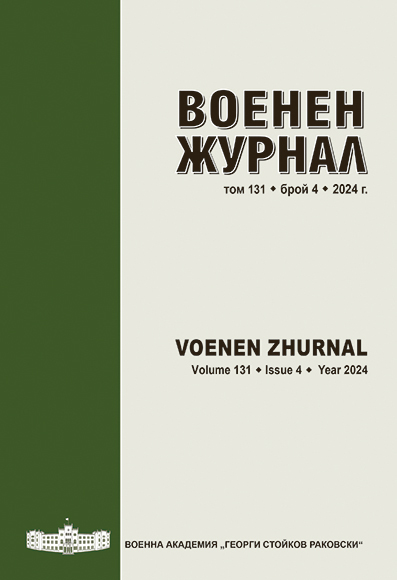
The status of Mount Athos during the First Balkan War and the accompanying peace negotiations was a major issue for Russia, Greece and the Western Great Powers. Paradoxically, Bulgaria, which is one of the countries in the Balkan Union, shows almost no interest in this problem. Bulgarian diplomacy perceives it as a private case that has much more background positions than the big and important problem related to the territorial expansion in the White Sea region and Macedonia. The article answers the question why Bulgarian politics underestimates the importance of the problem related to the status of the monastic territory on the Athos peninsula and its importance for the international prestige of the state, as well as its geostrategic positioning on the Balkans.
More...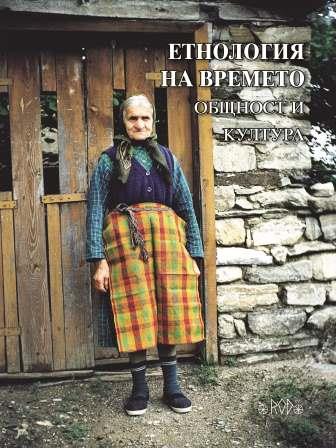
The report presents specific monuments from different periods in Thrace – megalithic, Thracian, Roman, early Christianity and Ottoman period. These monuments are sacral buildings or remains of destroyed sacral buildings, which on some occasion were buried with an earth mound. The most likely reason for this act is the desire to protect the holy places from destruction, further destruction, or desecration. This ritual tradition has survived on our lands for almost three millennia, although not universal and with varying intensity in different epochs.
More...
The text presents a possible anthropological perspective on the topic of memorial practices in Germany, linked to the problem of guilt and its overcoming through the dynamization of cultural memory. The thesis of guilt, being an element of the contemporary process of creating places of memory, is based on observations on memorial places for deserters. They may not be many in number (compared to monuments of other social or political victims in the history of Germany), but are becoming a catalyst of the dynamic process of building monuments called Denkmalarbeit. Indicative of the problem are the long, sometimes even paradoxical processes surrounding the decision-making for such monuments: their place, the artistic realization of every project, the accompanying public events, speeches and comments, the forms of implant. The mentioned factors, together with the conclusions of the observation, create a new sphere in the cultural memory of German society, related to changes in public attitude towards deserters and a search for new forms of memory in the process of acknowledging and overcoming guilt.
More...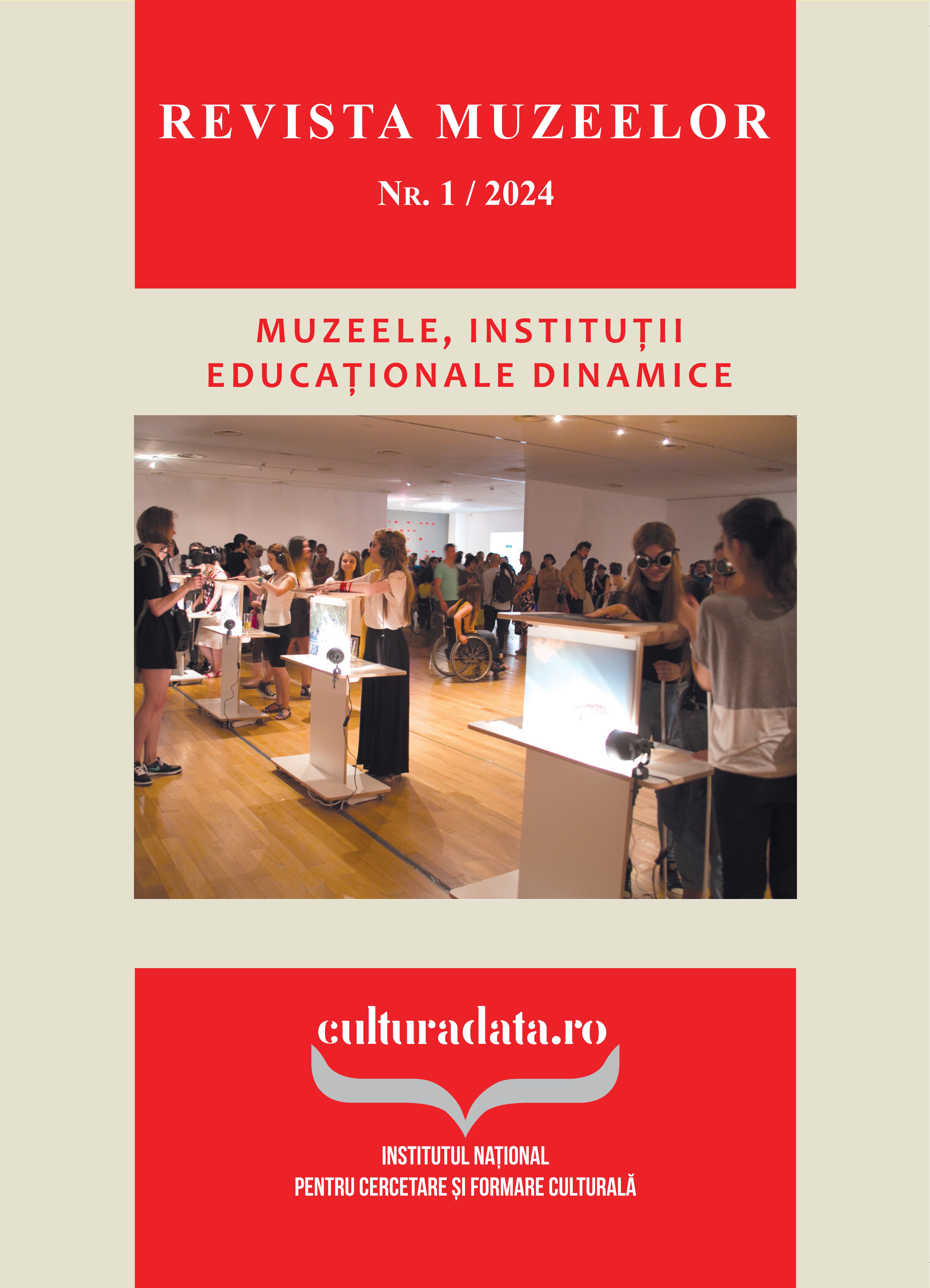
This article explores the interpretation and communication of dark heritage in Sighetu Marmației, focusing on three sites: the Memorial of the Victims of Communism and Anti-Communist Resistance, Pauper’s Cemetery, and the Elie Wiesel Memorial House. We argue that these sites convey Romania’s dark heritage by being associated with events and histories of troubled pasts, namely the Communist oppression and the Holocaust. The analysis addresses how and to what extent objects, politics, and spatiality contribute to the making of a sense of darkness identified in these sites. The article argues that the darkness of these sites is shaped not only by their histories, but also by the narratives constructed around them through the museum exhibits and curation. The study reveals that while these sites aim to educate and memorialise, they also navigate complex political and social dynamics, influencing how their dark heritage is presented and perceived.
More...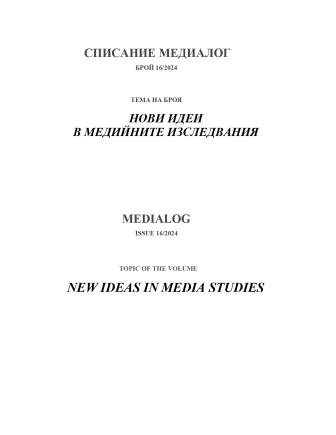
Текстът си поставя за цел да възпроизведе образа на медиите вразказите на участници в масовите протести от лято 2020 г. и стъпва върхуданни от 32 интервюта, проведени по имейл и онлайн конферентна връзкапрез есента на 2020 г. Основният въпрос е как протестиращите виждатролята на медиите в демократичния процес.Медиите нямат устойчив образ в представите на протестиращите задемократичния процес – те би трябвало да са там, но не присъстват,премълчават или създават изкривена репрезентация за действията напротестиращите.Анализът ще открои три фигури на медиите: а) медиите катоприсъстващ/отсъстващ партньор на протестиращите в битките засмисъла б) медиите като източник на изкривена репрезентация напротестиращите; в) медиите като „сянка на институциите“.
More...
A review of the book "Process Approach in Education. Development of Key Competences through Philosophy and Civic Education. Theory and Practice" (published by the Bulgarian Academy of Sciences "Prof. Marin Drinov", 2024, 350 p. ISBN 978-619-245-430-2). The monograph examines the theoretical and practical aspects of the possibilities of forming the competencies of critical thinking, creativity, civic engagement and media literacy through the teaching of philosophy and civic education.
More...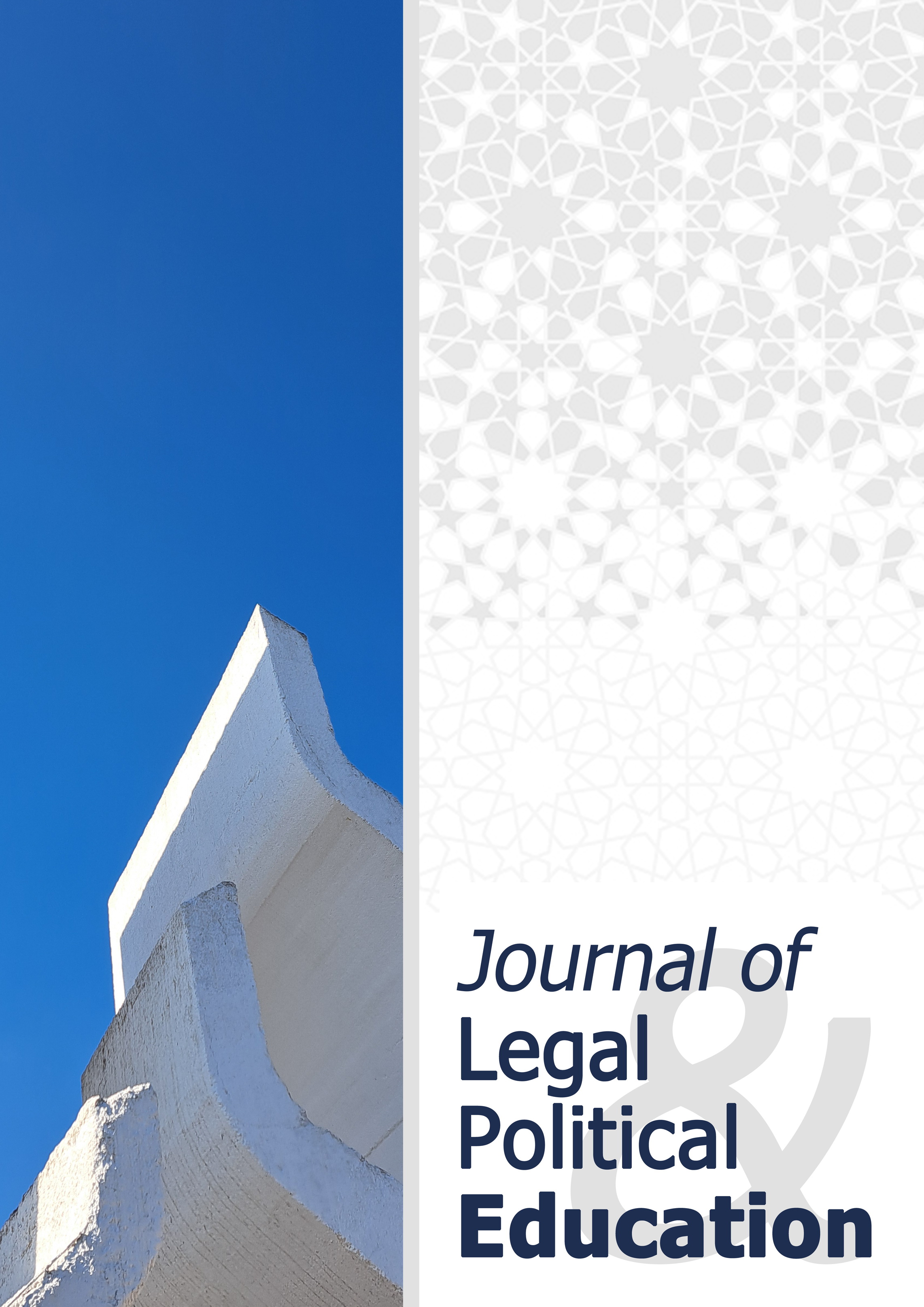
The research identifies the increasing shift in legal education from theory-based curricula to practice-oriented methods, using competitions like moot courts, client consultations, and legal negotiations. The study combines qualitative and quantitative data through case studies, participant feedback, and experimental course designs to assess skill acquisition and student engagement. The research presents that legal competitions develop critical professional skills, such as oral advocacy, negotiation, and legal analysis, and foster resilience, teamwork, and effective communication. Moreover, structured coaching and preparation amplify these benefits, ensuring alignment with the needs of the professional legal community. The conclusion emphasizes integrating these competitions more formally into law curricula to balance theoretical and practical education, addressing gaps in traditional pedagogy while better preparing students for real-world human resources legal challenges.
More...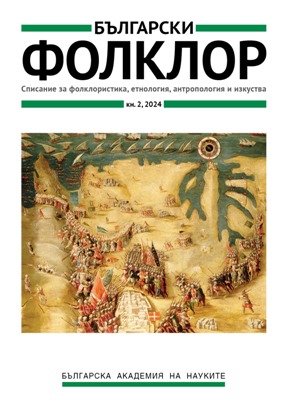
The text is dedicated to the opening of a new museum in the Town of Razlog.
More...